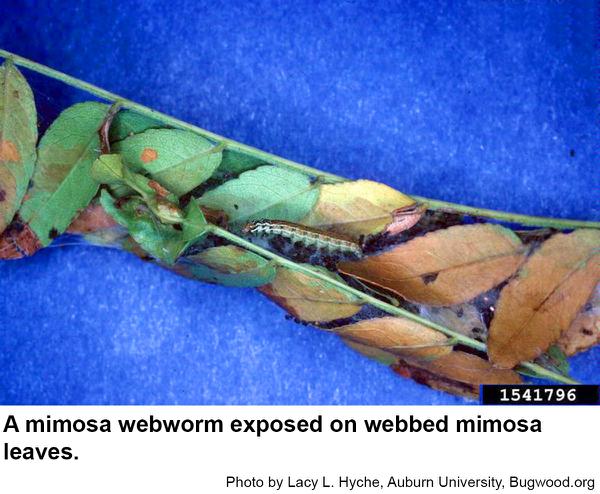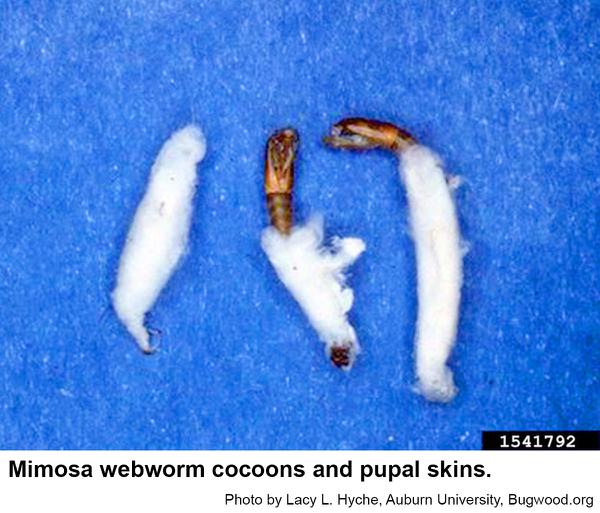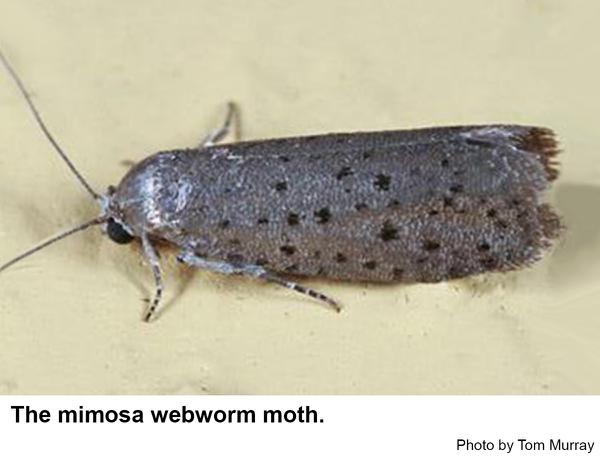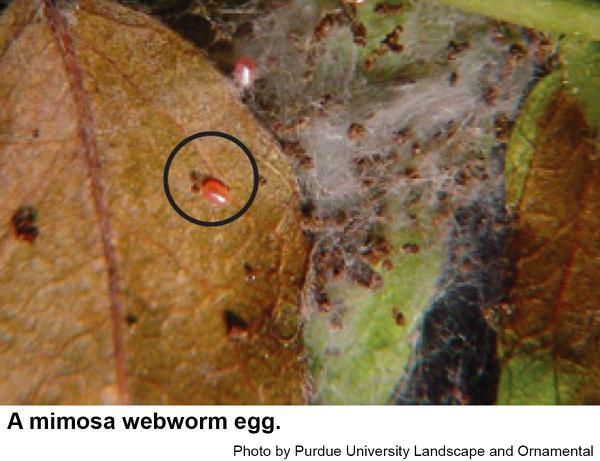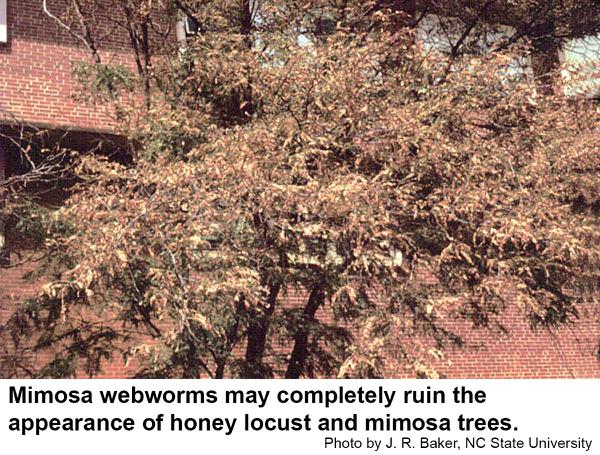Description and Biology
Mimosa webworms, Homadaula anisocentra, are small (up to one inch long), slender caterpillars that web up the foliage of mimosa and honey locust from June to September or early October. They are grayish to dark brown with five white stripes and are sometimes tinged with rose or pink. When disturbed, these webworms are extremely active and thrash violently before dropping down on silk strands. This pest overwinters inside a white, silken cocoon as a slender brown pupa in mulch, on tree trunks or some other sheltered area on the soil. The following June, small, spotted, silvery gray moths emerge, mate and females lay eggs. From these eggs hatch tiny caterpillars that feed and grow to about an inch long. Sometimes mimosa webworms pupate in the webbed leaves or near buildings, paved areas, or even on buildings. Another generation of moths emerges a short time later. The cocoons resemble puffed rice and are often found in groups. We have two to three generations of mimosa webworms a year in North Carolina.
Host Plants
Mimosa webworms web up the foliage of mimosa and honey locust. 'Sunburst' honey locust is reported to be very susceptible whereas 'Moraine', 'Skyline', and 'Shademaster' are less so. It is surprising such a small insect can cause so much damage, but heavily infested trees may have every leaf webbed up, skeletonized, and brown by mid summer. Trees ravaged for several years in a row may be severely stunted or may even die.
Residential Recommendations
Keep leaf and other debris raked up under host trees. If treatment is made in spring while honey locust and mimosa trees are in bloom, it would probably be better to use Bacillus thuringiensis insecticides (Dipel, Thuricide, Biotrol etc.) for control rather than a synthetic organic pesticide to avoid killing bees. Later in the season, those insecticides labeled for residential landscape use should give more than adequate suppression. This pest is a problem wherever honey locust is used as a landscape tree.
References
- Mimosa Webworm. Day, E. 1996. Virginia Tech Fact Sheet.
- Mimosa Webworm. Gibb, T. J. and C. S. Sadof. 2013. Purdue Extension Landscape & Ornamental, Department of Entomology.
- Mimosa Webworm. Knupp, B. and G. A. Hoover, Sr. 2012 (revised). Insect Advice from Extension. PennState College of Agr. Sci., Dept. Entomology.
- Extension Plant Pathology Publications and Factsheets
- Horticultural Science Publications
- North Carolina Agricultural Chemicals Manual
For assistance with a specific problem, contact your local Cooperative Extension Center.
This Factsheet has not been peer reviewed.
Publication date: Oct. 3, 2016
Reviewed/Revised: July 30, 2021
Recommendations for the use of agricultural chemicals are included in this publication as a convenience to the reader. The use of brand names and any mention or listing of commercial products or services in this publication does not imply endorsement by NC State University or N.C. A&T State University nor discrimination against similar products or services not mentioned. Individuals who use agricultural chemicals are responsible for ensuring that the intended use complies with current regulations and conforms to the product label. Be sure to obtain current information about usage regulations and examine a current product label before applying any chemical. For assistance, contact your local N.C. Cooperative Extension county center.
N.C. Cooperative Extension prohibits discrimination and harassment regardless of age, color, disability, family and marital status, gender identity, national origin, political beliefs, race, religion, sex (including pregnancy), sexual orientation and veteran status.

